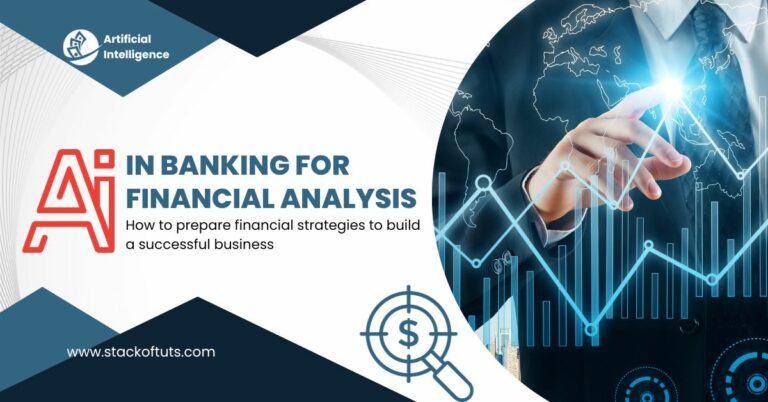
The use of AI in Anti-money laundering and transaction monitoring has dramatically improved the efficiency with which banks can fight financial crimes in today’s fast-paced banking industry. For safe, compliant, and productive banking operations, AI-driven AML techniques are crucial, and this article goes into the details.
The Evolution of AML in Banking
The banking sector has always been at the forefront of adopting innovative technologies to enhance security and operational efficiency. The evolution of AML practices in banking has transitioned from manual scrutiny to automated systems and now to AI-powered solutions. This shift signifies a transformation in detecting and preventing financial crimes, including money laundering, terrorism financing, and fraudulent activities.
Read about: Artificial Intelligence in Banking Operations for a full guide. Click on this link for special information and interesting finds!”
AI: The Game-Changer in Transaction Monitoring
AI has become a game-changer in transaction monitoring by providing a multi-dimensional approach to detecting suspicious activities. Traditional methods relied heavily on static rules and thresholds, leading to high false positive rates. AI, with its ability to analyze vast datasets, brings forth an unprecedented level of accuracy and efficiency.
1). Pattern Recognition and Anomaly Detection
AI algorithms excel in identifying patterns and anomalies in transaction data that might indicate illicit activities. This capability allows for a more nuanced understanding of customer behavior, significantly reducing false positives and enhancing the accuracy of alerts.
2). Predictive Analytics
AI-driven predictive analytics utilize historical data to anticipate potential risks and flag high-risk transactions before they materialize. This proactive approach is instrumental in averting financial losses and reputational damage.
3). Adaptive Learning
AI systems continuously learn and adapt to new types of financial crimes. This dynamic nature ensures that the AML systems remain effective even as fraudsters evolve their tactics.
Enhancing Regulatory Compliance with AI
Regulatory compliance is a critical aspect of banking operations. AI assists in navigating the complex landscape of AML regulations by:
- Automating Compliance Processes: AI automates the compliance process, ensuring adherence to regulations such as the Bank Secrecy Act (BSA), the USA PATRIOT Act, and global AML standards.
- Real-time Reporting and Analysis: AI enables real-time analysis and reporting, which is crucial for timely compliance with regulatory requirements.
The Ethical and Privacy Considerations in AI-driven AML
While AI offers remarkable advantages, it also raises ethical and privacy concerns. Banks must ensure that their AI systems are transparent, and accountable, and do not infringe on customer privacy. Adhering to data protection regulations like GDPR and ensuring ethical AI usage is paramount.
Case Studies: Success Stories in AI-Driven AML
Several leading banks have successfully implemented AI in their AML and transaction monitoring systems. These case studies highlight significant reductions in false positives, improved detection rates of illicit activities, and enhanced operational efficiency.
Top 10 AI Software for Anti-money Laundering
There were several notable AI software solutions that were highly regarded in the field of anti-money laundering (AML).
Here’s a list of top 10 AI software that were recognized for their effectiveness in AML:
- ACI Worldwide: Offers a comprehensive suite of AML solutions including real-time monitoring and advanced analytics to combat financial crime.
- FICO TONBELLER: Known for its Siron® AML solutions, FICO TONBELLER provides risk-based approaches to AML, integrating AI and machine learning for effective monitoring and reporting.
- SAS Anti-Money Laundering: Provides an integrated approach to AML with advanced analytics, robust data management, and sophisticated customer due diligence capabilities.
- Oracle Financial Services Analytical Applications (OFSAA): Offers a wide range of tools for AML, including behavior detection, transaction monitoring, and regulatory compliance management.
- Nice Actimize: Renowned for its AML solutions, Nice Actimize utilizes advanced analytics and machine learning for transaction monitoring, customer due diligence, and regulatory reporting.
- Palantir Technologies: Known for its high-end data analytics capabilities, Palantir offers sophisticated tools for detecting and investigating financial crimes.
- Feedzai: Offers real-time, machine learning-based solutions to detect and prevent fraud and money laundering across payment channels.
- Quantexa: Employs contextual decision intelligence technology to provide advanced AML solutions, focusing on dynamic entity resolution and network analytics.
- BAE Systems Applied Intelligence: Offers NetReveal, a solution that combines advanced analytics with a deep understanding of financial crime detection.
- ThetaRay: Specializes in AI-based big data analytics, offering solutions for AML, fraud detection, and operational efficiency improvements.
These software systems’ efficacy and acceptability rely on a financial institution’s demands, including its size, transaction kinds, and location. AI and AML are continuously changing, so it’s best to investigate and confer with industry professionals for the latest information and advice.
Challenges and Considerations
Implementing AI in AML and transaction monitoring is not without its challenges. These include the need for large datasets for training AI models, ensuring privacy and security of the data, and dealing with the ethical implications of AI decisions. Additionally, there is a need for skilled professionals who can interpret AI outputs and make informed decisions.
The Future of AI in Banking AML
The future of AI in banking AML is promising, with continuous advancements in technology leading to more sophisticated and effective solutions. The integration of AI with other emerging technologies like blockchain and the Internet of Things (IoT) is set to further enhance AML efforts.
FAQs
AI in transaction monitoring enhances accuracy in detecting fraudulent activities, reduces false positives, and speeds up data analysis. It enables real-time, efficient identification of suspicious transactions, significantly improving a bank’s security and compliance measures. This technology revolutionizes how financial institutions manage and mitigate risks.
The transaction monitoring process in banks involves continuously scanning and analyzing financial transactions to identify suspicious activities. This process utilizes advanced algorithms and compliance rules to flag potential money laundering or fraudulent actions. It plays a crucial role in ensuring banking security and regulatory adherence.
A Transaction Monitoring System for AML is a sophisticated tool that scrutinizes financial transactions to detect unusual activity indicative of money laundering. It employs advanced algorithms to analyze transaction patterns, ensuring compliance with anti-money laundering regulations. This system is pivotal in safeguarding financial institutions from illicit financial activities.
In Anti-Money Laundering (AML), key tools include AI-driven software for transaction monitoring, compliance management systems, and risk assessment databases. These tools effectively detect and prevent financial crimes by analyzing transaction patterns and ensuring regulatory adherence. They offer a technologically advanced shield against money laundering activities in the financial sector.
Conclusion
AI in anti-money laundering and transaction monitoring is a major step toward more safe and efficient banking. Its ability to analyze complex data patterns, adapt to evolving risks, and ensure regulatory compliance positions AI as an indispensable tool in the fight against financial crimes.
Thanks!





